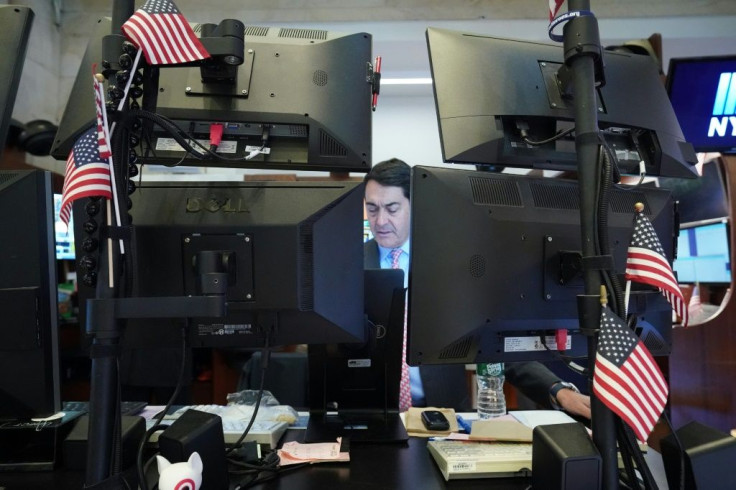Stock Market Futures: Dow, S&P 500, Nasdaq Plunge Further After Worst Day Since 1987

KEY POINTS
- Friday will continue the massive selloff begun Thursday with futures pointing to this foregone conclusion
- Asian markets in early Friday trading were wallowing in the red
- Wall Street's 11 year-long bull market ended on Thursday
The huge selloff in global equities will continue apace Friday -- but not at Thursday's horrific lows of more than 9% -- as futures point to a more muted but nonetheless painful rout.
Stock futures fell in overnight trading, an early indication of the pain to come. As of 12:25 a.m. ET Friday, futures on the Dow Jones Industrial Average plummeted 338 points, suggesting an implied opening drop of 450.62 points on Friday. S&P 500 futures and NASDAQ-100 futures also pointed to opening losses.
An indication of the rout awaiting Wall Street could be gleaned from Asia's markets, which all plunged in early trading Friday. Japan's Nikkei plummeted more than 9%, while Australia's S&P/ASX 200 dropped 8%. Both benchmark indices entered a bear market earlier this week. A bear market defined as a 20% drop from the most recent high.
South Korea's benchmark Kospi yielded 7%, and is on track to hit its lowest level since 2011. Kospi is expected to enter into a bear market Friday. Hong Kong's Hang Seng Index fell 6.7%, while China's Shanghai Composite slid 4%.
Black Thursday on Wall Street ended the 11 year-long bull market run in gasps of horror after president Donald Trump single-handedly worsened the global economic outlook by cutting off European access to the United States that brings in billions of dollars daily.
In his address Wednesday evening, Trump blamed Europe for worsening the COVID-19 pandemic in the U.S. instead of revealing solutions to stem the medical crisis while pushing forward an economic stimulus package. Trump did neither and instead ranted against the "foreign virus" invasion of the U.S. exacerbated by European inaction.
The Dow Jones Industrial Average closed 2,352.60 points lower Thursday, or 9.99%, at 21,200.62. The massive plunge was the Dow's worst drop since the 1987 “Black Monday” market crash, when it collapsed by more than 22%. The S&P 500 plummeted 9.5% to 2,480.64, joining the Dow in a bear market. It also had its worst day since 1987 and is now down about a quarter this year in only 16 trading sessions. The NASDAQ Composite closed 9.4% lower at 7,201.80. Black Thursday is now being called the day the 11 year-long bull market run officially died.
Analysts' said the market’s historic drop confirms that investors believe the Trump administration's fiscal plans and the U.S. Federal Reserve’s hastily arranged repo operations won't be sufficient to offset the crippling economic impact from the COVID-19 pandemic.
“I would advocate for pushing money into the hands of companies right now, and into the hands of individuals … and individual consumers because that is really the only thing … that is gonna help at this point,” said David Riedel, president and founder of Riedel Research Group, to CNBC.
“When they’re ready to spend, then that V (shaped recovery) ... can take hold and things can start to recover quickly."
The three repo operations launched by the Fed Thursday to stem the market panic will unleash more than $198 billion into the financial system. Investor fears over the Trump administration's inability to get ahead of the COVID-19 menace, however, trumped this attempt.
© Copyright IBTimes 2025. All rights reserved.





















